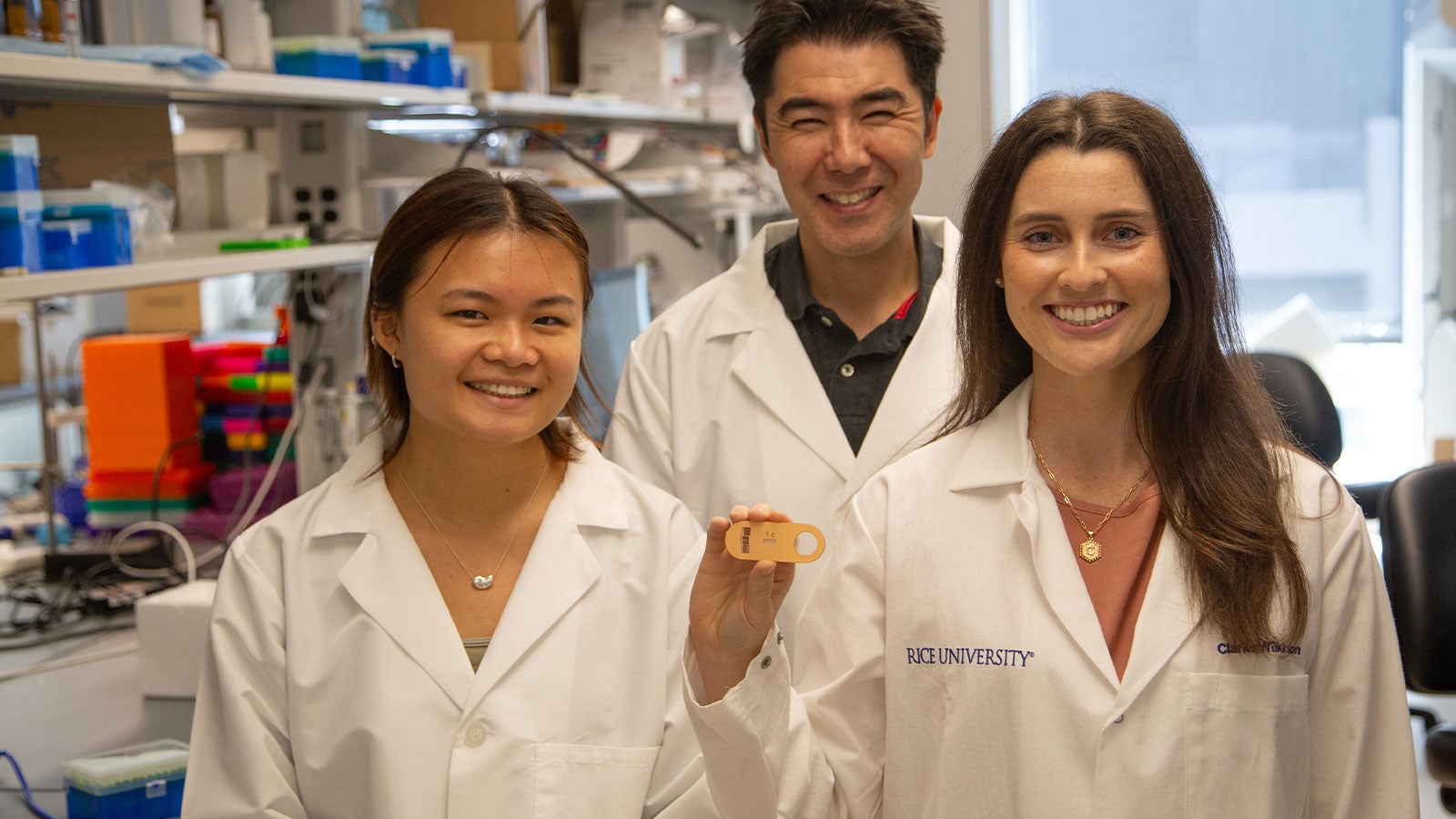Rapid diagnostic tests are clinically critical to modern medicine but have limitations.
“They’re quick and easy to use. They’re among the most commonly used tools for in vitro diagnostic testing, but they can also result in problems,” said Peter Lillehoj, Shankle Chair in Mechanical Engineering (MECH), associate professor of MECH, and of bioengineering (BIOE) at Rice.
These tests require collecting a blood sample which can be painful, result in infection and can lead to other complications. Lillehoj and students in the Lillehoj Research Group have devised a blood-free, point-of-care diagnostic test for rapid detection of protein biomarkers in dermal interstitial fluid (ISF).
ISF is the liquid surrounding the cells in the human body. Its value as a diagnostic fluid is comparable to blood but less painful, safer to collect and largely underutilized. Existing methods for sampling dermal ISF are time-consuming, require specialized equipment, need to be performed by trained medical professionals and often yield amounts that are too small for biomolecular analysis using conventional diagnostic assays.
Lillehoj outlines a new strategy in his article, “Lateral Flow-Based Skin Patch for Rapid Detection of Protein Biomarkers in Human Dermal Interstitial Fluid,” published in ACS Sensors, a journal of the American Chemical Society.
The device consists of a lateral-flow immunochromatographic assay—a tool that detects the presence of a target biomarker in a liquid sample—integrated into a microfluidic skin patch. ISF is collected from the skin using microneedles and a vacuum-assisted extraction system integrated into the patch and transported through the lateral-flow strip.
“Using this skin patch platform, we have demonstrated in situ detection of anti-tetanus toxoid and SARS-CoV-2 neutralizing antibodies,” Lillehoj said. “They could be accurately detected in human ISF in less than 20 minutes. We envision the device can be readily modified to detect other protein biomarkers in dermal ISF, making it a promising tool for rapid diagnostic testing.”
Lillehoj’s co-authors are Elizabeth “Clarke” Wilkirson, a fifth-year doctoral student in MECH, and Danika Li, a senior in BIOE at Rice.

